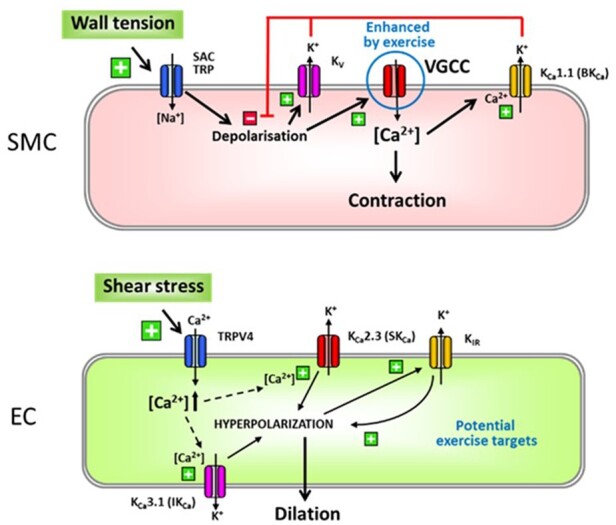Figure 8.

Regular exercise may affect multiple ion channels in SMC (upper panel) or EC (bottom panel). However, experimental data have shown up to now only enhanced Ca2+ currents through VGCC (encircled in blue) in SMC after RAEX. This is either due to changes in conductance upon channel phosphorylation or due to an upregulation at the protein level. VGCC are involved in myogenic responses initiated by a depolarization through activation of SAC or TRP channels. The increased activity of K+ channels (BKCa and KV) found in exercised animals is most likely attributable to the initial enhanced VGCC activity because they act in negative feedback manner limiting depolarization. The ion channels involved in shear stress-induced endothelium-dependent responses are shown for EC. TRPV4 channels enable Ca2+ influx leading to activation of SKCa and IKCa and subsequent EDH-type dilation, while endothelial KIR acts as an amplifier of hyperpolarizing signals. All channels may be functionally modulated by RAEX. However, up to date this was not verified at the molecular level although RAEX enhances EDDs including EDH-type dilation. For further details see text. EC, endothelial cells; SAC, stretch-activated channels; SMC, smooth muscle cells; TRP, transient receptor potential channels; VGCC, voltage-gated Ca2+ channel.
